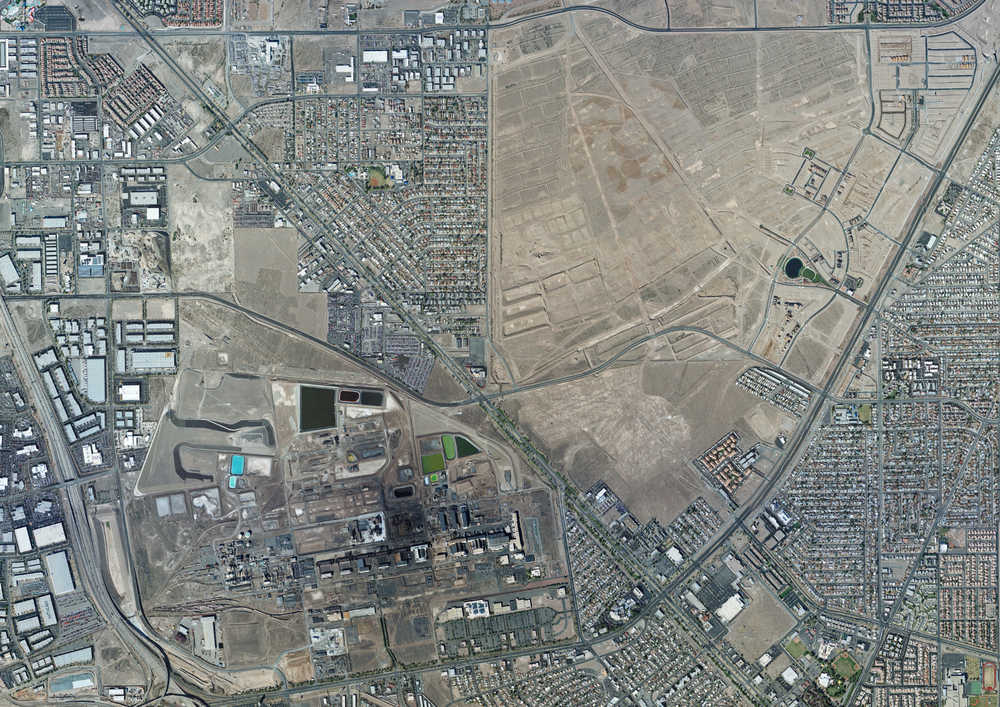Black Mountain Industrial (BMI) Complex

Background
Find Out More
Technical Guidance Documents
Background
In 1941, the U.S. Government deeded approximately 5,000 acres of vacant desert in the southeastern part of the Las Vegas Valley that would become the site of the world's largest magnesium plant - a plant that played a critical role in the World War II effort. Following the war, portions of the plant and adjacent land were leased to various industrial, government and business entities primarily involved in the production of chemicals and products containing chemicals.
During the ensuing years, operations at these plants produced a variety of industrial and municipal effluents that were historically disposed of on-site in unlined evaporation ponds, transported off-site via ditches, or disposed of on the land surface.
These disposal practices were industry-standard and legal at the time. Some of the wastes migrated into the Las Vegas Wash, a waterway that flows into Lake Mead, a primary source of drinking water for southern Nevada and millions of downstream users. Current waste disposal practices are consistent with all local, state and federal guidelines and regulations.
Since the 1970's, the Nevada Division of Environmental Protection (NDEP) has provided oversight for the remediation of soil and groundwater impacted by the legacy contaminants from each of the sites which make up the BMI Complex. The NDEP's Bureau of Industrial Site Cleanup was formed in 2015 to continue this effort and currently oversees remediation activities for Basic Remediation Company, Titanium Metals Corporation, Nevada Environmental Response Trust, Pioneer Americas, LLC d/b/a Olin Chlor Alkali Products, and Endeavour.

Find Out More
Learn about Basic Remediation Company
Learn about Titanium Metals Corporation (TIMET)
Learn about Nevada Environmental Response Trust (NERT)
Learn about Pioneer Americas, LLC d/b/a Olin Chlor Alkali Products
Technical Guidance Documents
Asbestos and Asbestos-Specific Risk Assessment
Data Quality
- Detection Limits and Data Reporting
- Use of Field Duplicates and Field Splits
- Cation-Anion Balances
- Data Validation
- Data Usability
Hydrogeologic and Lithologic Issues
Polychlorinated Biphenyls (PCBs)
Regional Background Concentrations - Metals and Radionuclides
Risk Assessment and Toxicology
- Basic Comparison Levels (BCLs)
- COPC Selection - Lead
- Ecological Risk Assessment
- EPA Guidance Documents
- Arsenic
- DEPT and DMPT
- Dichlorobenzil
- HCH
- Organic Acids
- PAHs
- Titanium and Tungsten
- VOC Surrogates
Statistics

